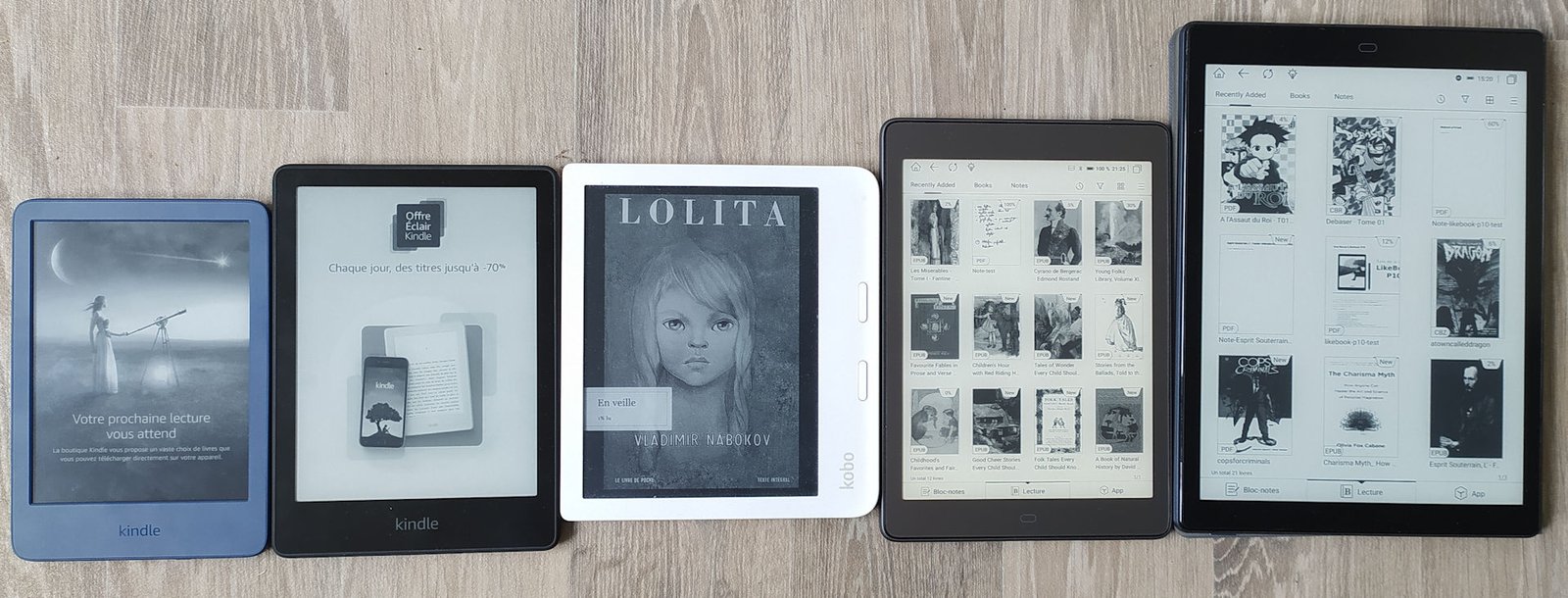
Among the different ereaders available, you may have noticed that there are models of different sizes. It is the size of the screen that changes from one e-reader to another and we will see how to choose well.
Different sizes of e-readers (comparison)
First of all, here are the different sizes of e-readers that we can find nowadays :
- 6-inch screen
- 6.8 inch screen
- 7-inch screen
- 7.8 inch screen
- 8-inch screen
- 9.6 inch and above screen
- 10.3 inch screen
This ereader comparison chart will help you to better see the differences between the various diagonals of the e-readers on the market :
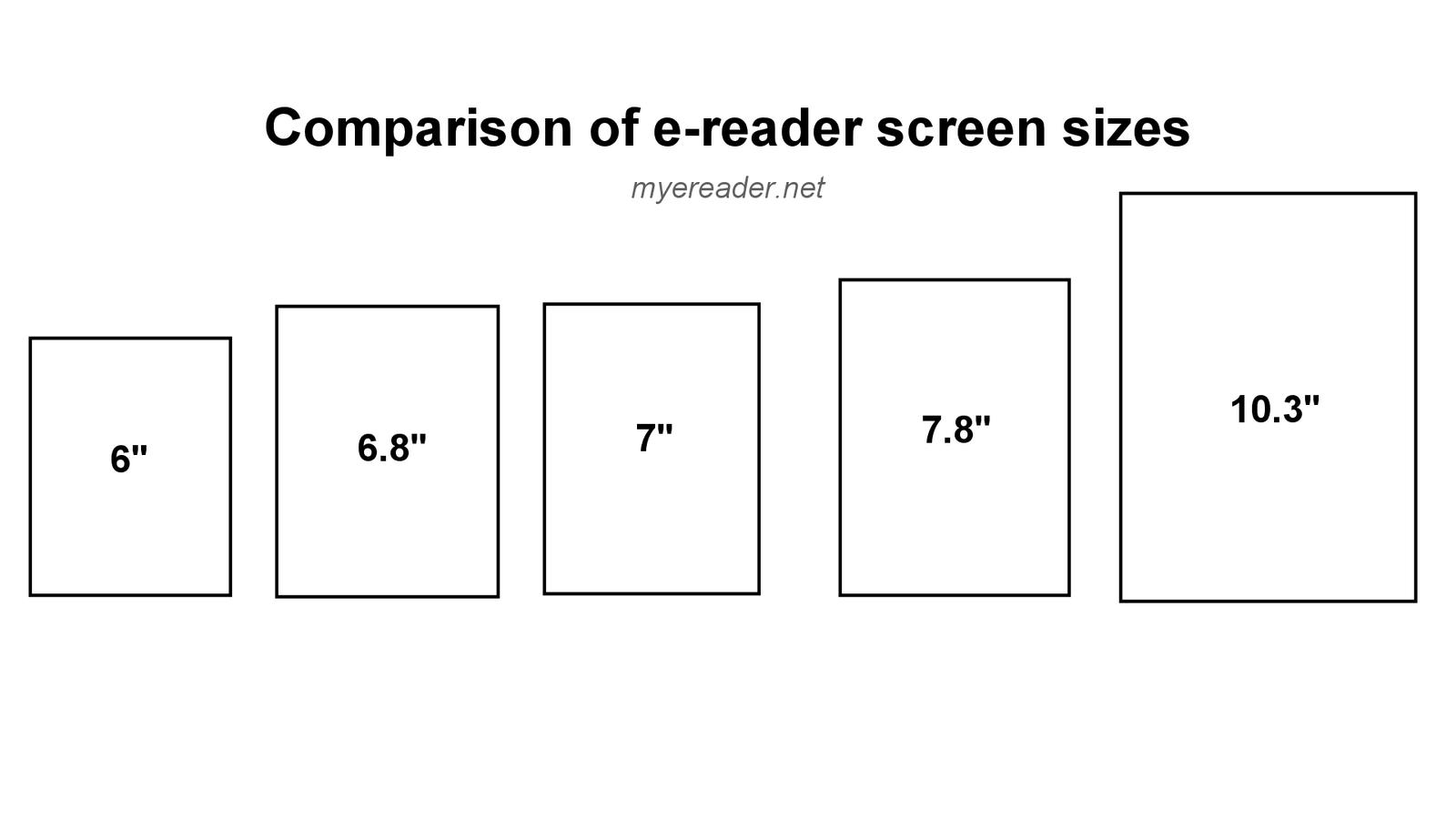
Image : Comparison chart of the main diagonals of e-reader screens (with electronic ink)
The 6-inch screens are the most common and e-readers with this type of screen are generally inexpensive or relatively accessible financially.
There is, for example, the Kobo Libra 2 which has a 7 inch screen which is very interesting and, among the competition, you have the Kindle Paperwhite and its 6.8 inch screen for a little less.
But, you can choose even bigger by opting for an Inkpad 4 reader and its large 7.8 inch screen.
Before going into details, we will focus on the particular case of the readers of about 10 inches (the diagonal screen of 10.3 inches being the most common).
Large screen ereaders with a size of 10.3 inches and more
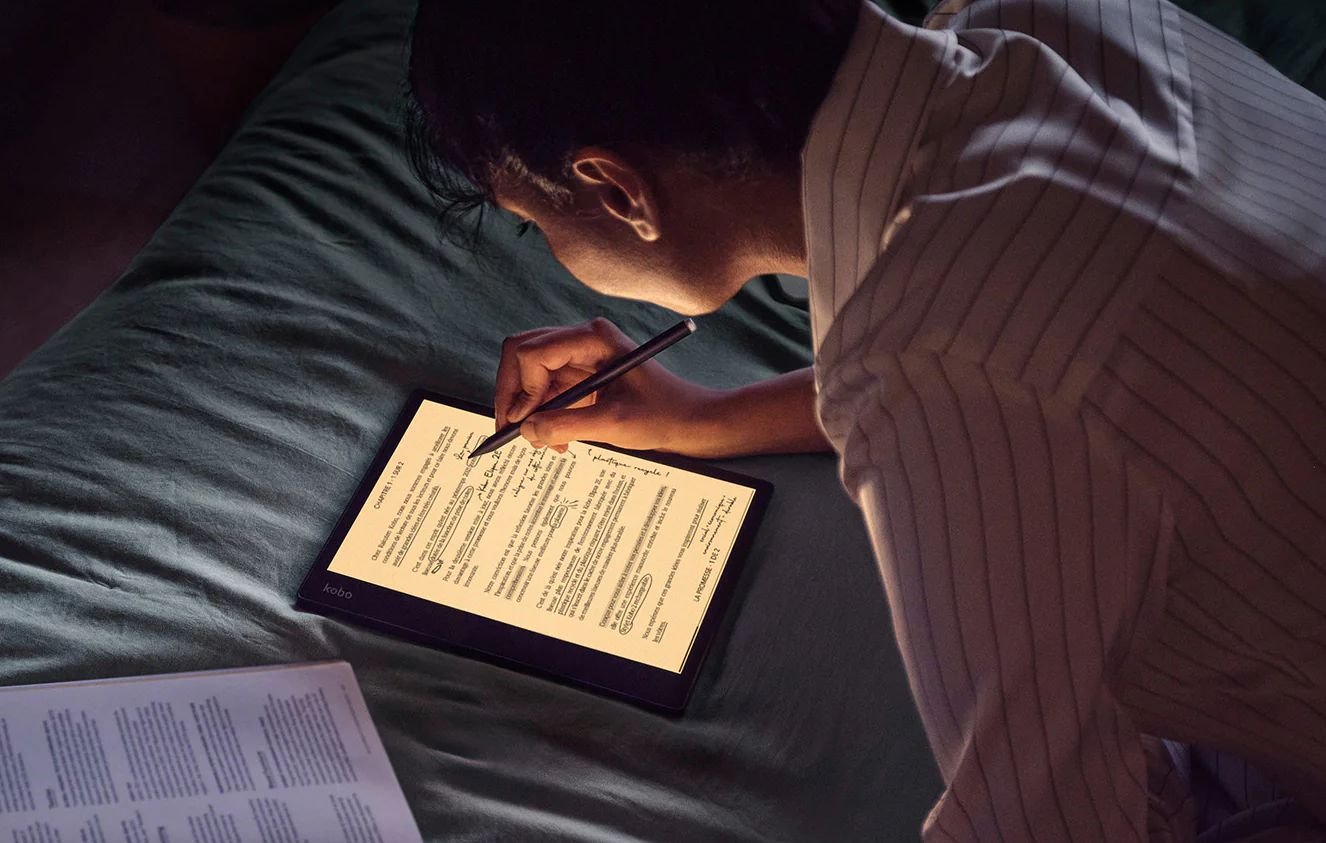
Sometimes you can find on the market large screen ereaders that offer a large number of functions with a large screen with electronic ink (e-ink) with a diagonal of 10.3 inches and more.
The main representatives available from the major e-reader brands are:
While these are not necessarily bad readers, they work with a system that allows for additional features, such as note-taking with a stylus.
They are full-fledged work tools that do more than just read ebooks.
If the screen of these e-readers offers a very nice display surface, I think they are more intended for professional or academic use than exclusively for reading.
They have the disadvantage of being very bulky compared to a simpler and smaller e-reader intended for reading (7.8" screen and smaller).
That being said, they are very interesting for manga lovers or people who read PDF documents, since the large screen will allow to better appreciate the details of the pages without having to use the zoom.
That's why I don't advocate 10.3" and large screen ereaders for reading ebooks.
6-inch e-reader: the perfect size?
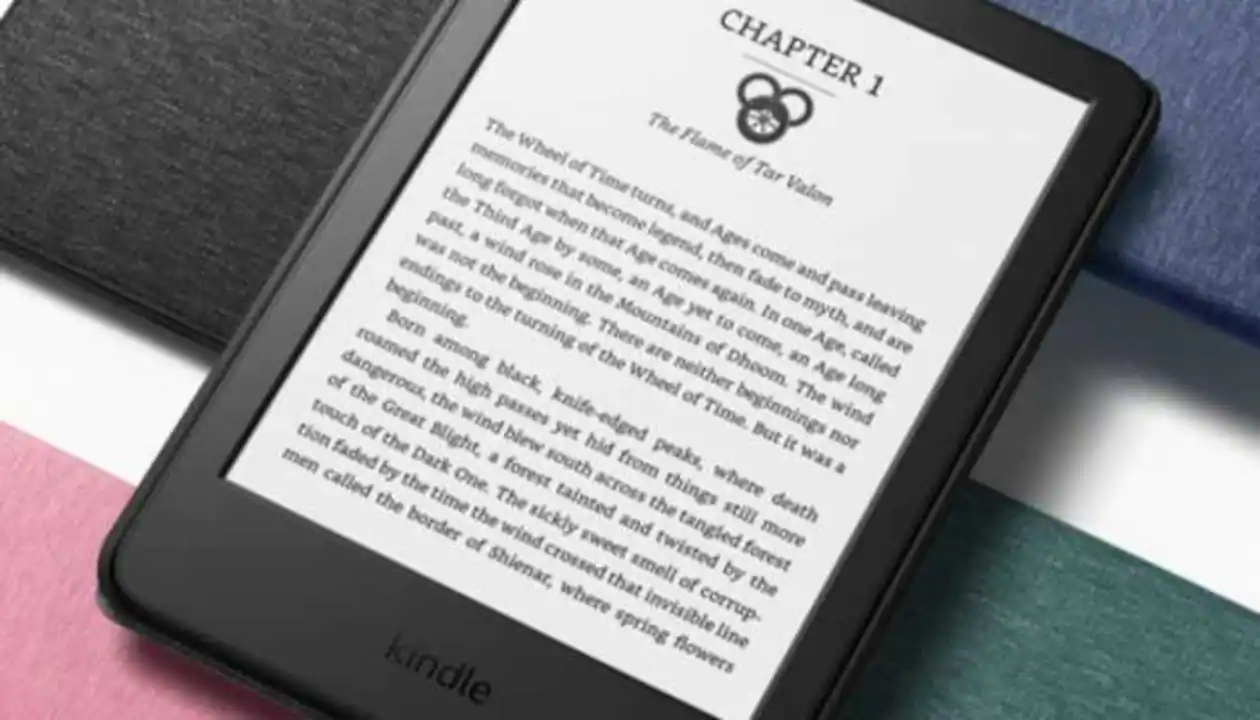
The history of e-readers is littered with machines of different sizes.
But, one thing that hasn't changed in over 15 years of e-readers is that e-reader manufacturers all offer 6-inch models.
There are many reasons for this:
- e-ink screens are particularly reliable and offer a good resolution in 6 inches which allows to imitate very well the paper
- a 6-inch screen consumes less energy than a larger screen
- a 6 inch screen allows to create small and easily transportable e-readers
- a 6 inch reader offers a screen size between a paperback and a large format
In my opinion, these are the reasons why 6-inch e-readers have become popular and why there are now so many of them on the market.
The 6-inch e-readers with e-ink screens offer a very comfortable reading experience, similar to paperback books, which makes them particularly easy to carry around.
If you read in public transport (subway, bus, train, plane) or if you want to take a e-reader on vacation, it is a very good format.
Their problem is that they are less interesting for manga readers.
6.8 and 7 inches ereaders for more comfort

In the 6.8-inch and 7-inch formats there are 3 interesting readers:
- Kindle Paperwhite : 6,8 inches
- Kobo Libra 2: 7 inches
- Kindle Oasis: 7 inches
This is a very comfortable and versatile screen format that allows you to read novels (ebooks) as well as mangas while keeping a small footprint that allows you to carry the reader without getting too bulky.
So we have two diagonals of e-ink screens available in this format:
- 6.8 inches
- 7 inches
So does 0.8 or 1 inch make a difference compared to a slightly smaller e-reader?
Well, yes, with a slightly larger screen, it's immediately more comfortable.
Note that while the Kobo Libra 2 is larger (in size) than a 6-inch e-reader, the Kindle Oasis has a slightly different format (more square) that I find easier to carry around (but it's also more expensive).
So this size of e-reader is quite reasonable even for daily use and transportation on the bus, subway or train.
Unfortunately, these ereaders are also more expensive - quite a bit - than the smaller versions. However, the Kindle Paperwhite with its 6.8-inch screen is still quite affordable.
On the other hand, the same is not true for the 7.8-inch e-readers.
Reader with 7.8-inch screen: for home and manga
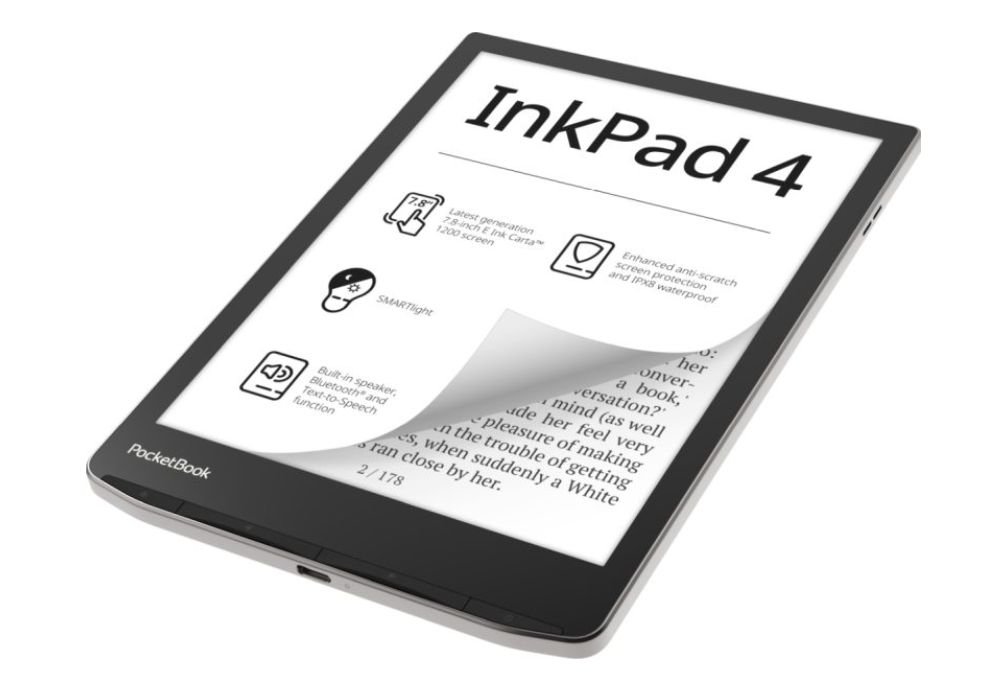
Finally, we come to the last part with the 7.8-inch readers, of which the best current representative is the Pocketbook Inkpad 4.
This format is mainly intended for home use - in my opinion - because of the size that the reader can take in a bag. Don't worry, it is still possible to carry it of course!
But, it's really comfortable to have a 7.8 inch screen to read a good book in an armchair or a sofa.
Another good news is that if you read a lot of manga (Japanese comics in small format and printed in black and white), this type of reader is quite suitable.
Conclusion : which size of e-reader to choose ?


In conclusion, here is what you need to remember to choose your e-reader:
- 6-inch size: for everyone
- 6.8 to 7 inch size: for the more affluent mobile reader who sometimes reads manga
- 7.8-inch size: for home reading and manga
- 10.3-inch size: for people who want a machine for reading and working (note taking)
If you liked this article, consider sharing this page on social network or to someone that could benefit from the information.







